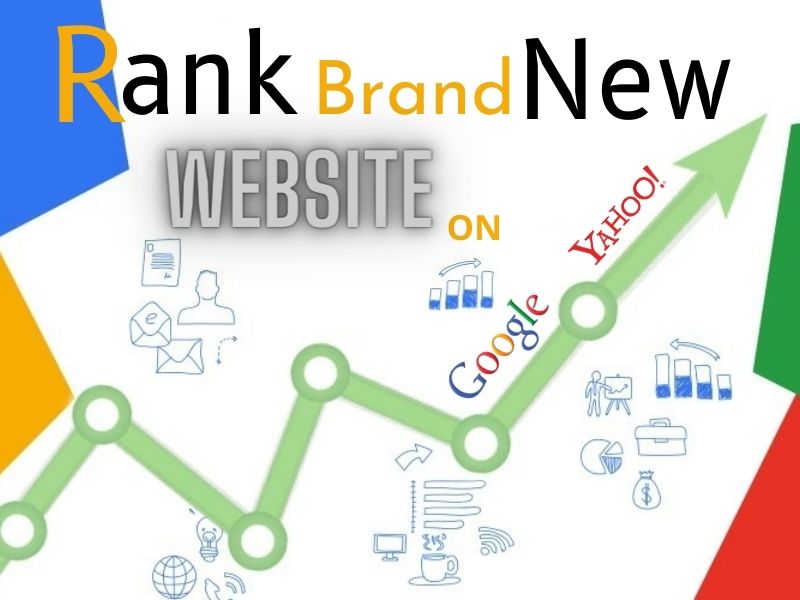You have launched a new website and you know Google can bring you a steady and vital flow of organic (more so free) traffic. So, how can you put up your brand-new website on Google?! Where to get started?!
Basically, how to rank your new site on Google!
Before anything you need the right mindset as you want your website to appear when someone googles for keywords related to your niche, business, products, or services. For this very reason, you need to optimize your site, as Google considers it high-quality and worth ranking your site on the top. This is what SEO (search engine optimization) is all about!
Step 1: Start with keyword research
Keyword research is the cornerstone of SEO. You need to figure out which keywords you want to rank for “targeted keywords”. Start by thinking which keywords best represent your business, what you do, and what you offer?!
However, simply guessing which keyword to rank for usually isn’t the best way to go. Yes, that’s an excellent approach to generate keyword ‘ideas’, but you need to analyze the search volume and competition of those keywords.
This will help you estimate the keyword popularity and how difficult it would be to rank. Remember, not all keywords have the same value! Luckily, there are many tools that can help you get precise data on every given keyword.
You can use free tools like Google’s Keyword Planner and Ubersuggest to premium (paid) tools like SEMrush and Ahrefs.
Make sure to look at which keywords your competition is ranking for, as well. Competitors can provide an insight into what works and can help guide your SEO strategy. Learn how to spy on your competitors with our detailed competitive analysis guide.
Create a list of potential keywords, then prioritize them according to their popularity and difficulty.
Step 2: Optimize pages for your target keywords
Once you identify the keyword that best represents your business, has enough search volume, and isn’t insanely competitive, it’s time to optimize your site around those target keywords.
IMPORTANT NOTE: Target one primary keyword for every page on your site. To avoid competing against yourself, choose unique target keywords for each page.
Optimize your home page for your general business keyword, your product/services pages around your product/service keywords, and so on. You get the picture.
This process will help Google understand your website and pages, and which search phrases to rank you for.
1. Optimize your headings
Headings are important for organizing your page copy. They give structure to your content and help both users and Google skim through and understand your content.
2. Insert keywords in page URLs
Customize the URL of every page on your website. Each URL should be easy to read, remember, and should communicate what’s on the page. Insert your target keyword in the page URL to describe what the page is about. This will help both users and Google.
3. Write keyword-rich page content
Make sure your page copy is compelling, relevant and easy to read. It’s essential to include your target keyword a few times in the text. Your page content should be keyword rich.
Another best practice is to drop your target keyword in the first 100 words of your text so visitors and Google can immediately see what the page is about.
Also, make sure you write long (1,000+ words), quality content. Longer content not only helps in adding more keywords, but it also makes it more in-depth (which Google loves) and increases the marketing potential of your page.
4. Have click-worthy title tags and meta descriptions
Title tags and meta descriptions appear in the search results. Their role is to convince searchers to click through to your website.
Google likes to see high click-through rates (CTR) that’s why you need to make compelling title tags and meta descriptions to capture more clicks.
Title tags are another page element that Google looks at to learn what the page is about, which makes it another excellent spot to insert your target keyword.
Keep your title tag short (50-60 characters), so they aren’t truncated in the search results, especially on small devices.
Meta descriptions don’t directly contribute to your rankings, but they assist your titles to get those clicks. So, make sure you describe what your page is about, include your target keyword and give a good reason for users to open your page.
5. Optimize images with descriptive alt text
Having HQ images on your page enhances your content and user experience. However, Google is not able to read and understand images; that’s why you need to give it a hand.
Optimize your image alt text to help search engines understand what’s on your image. Google reads your image alt tags, and if they find your images relevant and connected to your target keyword, that’s a quick win to help your rank.
Include your primary keywords in your image filename and alt text whenever possible. This is purely for Google, so it deems your images relevant to your page, and your page relevant to your target keyword.
Step 3: Ensure high speed and performance
Google insists on high performance and excellent user experience. That’s why you need to optimize your page to make it snappy, responsive and secure.
1. Boost your loading speed
Loading speed is a significant component of user experience, which makes it super important for Google and users alike. So, make sure your website and pages load as fast as possible.
Use Google’s free Page Speed Insights tool to check the speed performance on desktop and mobile devices. You will get a speed score, as well as some recommendations on how to improve your loading times. Some of it might be too technical, so consider hiring a web development team.
2. Have a mobile-friendly site
People are using mobile devices more and more to browse the internet. Studies show that over 50% of internet traffic comes from mobile devices. If you want to rank your new website, it needs to be mobile-friendly and responsive. Your site needs to be optimized for small screens and touchscreen devices.
Check out Google’s Mobile-Friendly Test to see how your site performs on mobile devices.
3. Make your site secure with HTTPS
Security is another one of Google’s ranking priorities. And it makes perfect sense since security is a big concern in today’s online world.
That’s why you need to make sure your site is secure with an HTTPS connection.
Having a secure (HTTPS) connection is a top priority for every site, new and old. It’s essential for ranking your website, as well as building trust and credibility.
Learn more about WordPress security and how to secure your site from hackers with 23 actionable tips in our in-depth guide.
Step 4: Create and optimize content to capture more traffic
To get more rankings and traffic to your new site, create a blog section to capture visitors searching for informational keywords. These can be lists, comparisons, checklists and how-to guides (like the one you’re reading now).
Blog posts can bring you valuable visitors who are in the early stages of their buyer’s journey.
Run keyword research to identify topics that your potential customers are googling. Consider what questions customers may ask and what problems you can help them solve.
Use BuzzSumo to find popular topics in your niche. Also, use tools like SEMrush and Ahrefs to estimate the search volume and difficulty, as mentioned before.
Focus on long-tail keywords because they have much lower competition and your new site can rank faster. Content and blog posts can help you rank for informational keywords, but it can also help boost rankings for your money pages (homepage, product/service pages, etc.).
Google puts significant weight on the authority of a website measured in backlinks. More authority helps you rank faster and higher. Don’t expect too many backlinks to your money pages, though. People are just not interested in linking to those.
However, high-quality content is a true link magnet.
Interlink your blog posts with your money pages to spread your authority or “link juice” to those pages and boost their rankings.
Step 5: Boost your rankings with backlinks
Backlinks tell Google your site is credible and worth ranking. To rank your new website, you need a link building strategy to increase your authority. Start by analysing your competitors to see where they get their backlinks from.
Pay attention to the following: Why did these sites decide to link to your competitors? What about the page made it worthy of a link?
Reverse engineer your rivals’ link building strategies with tools like Ahrefs, SpyFu, and SEMrush. Use SEO Quake to analyze the authority and backlinks of websites that rank for your target keywords.
This will help you determine what you need to do to outrank them.
Amplify your new website and content by promoting it on social media, forums, engaging communities on Reddit, answering questions on Quora, posting links on WEB 2.0 sites, etc. Link building can be quite an arduous task, especially for a new and relatively unknown website.
Start with simple link building strategies for some quick wins, then work your way to more demanding and sophisticated tactics.
How long does it take to rank a new website?
Ranking a new website on Google may take from 3-6 months, but this depends or your niche, competition and your SEO efforts.
You can expect more tangible results after 6-7 months, provided that you keep working in the right direction. You can start getting some serious traffic from Google only after 6-18 months.
Conclusion
Ranking your new website is a long-term strategy – it takes a while to get results, but it brings you high-quality organic (free) traffic for years to come.
Don’t be discouraged by the initial long wait, with the right SEO tactics your site will eventually start ranking and climb up in Google’s search results.
Monitor your traffic with Google Analytics to keep an eye on your performance and measure results.
Trishna Patnaik, a BSc (in Life Sciences) and MBA (in Marketing) by qualification but an artist by choice. A self-taught artist based in Mumbai, Trishna has been practising art for over 14 years. After she had a professional stint in various reputed corporates, she realised that she wanted to do something more meaningful. She found her true calling in her passion that is painting. Trishna is now a full-time professional painter pursuing her passion to create and explore to the fullest. Trishna also conducts painting workshops across Mumbai and other metropolitan cities of India. She is also an art therapist and healer. She works with clients on a 1-on-1 basis.



















